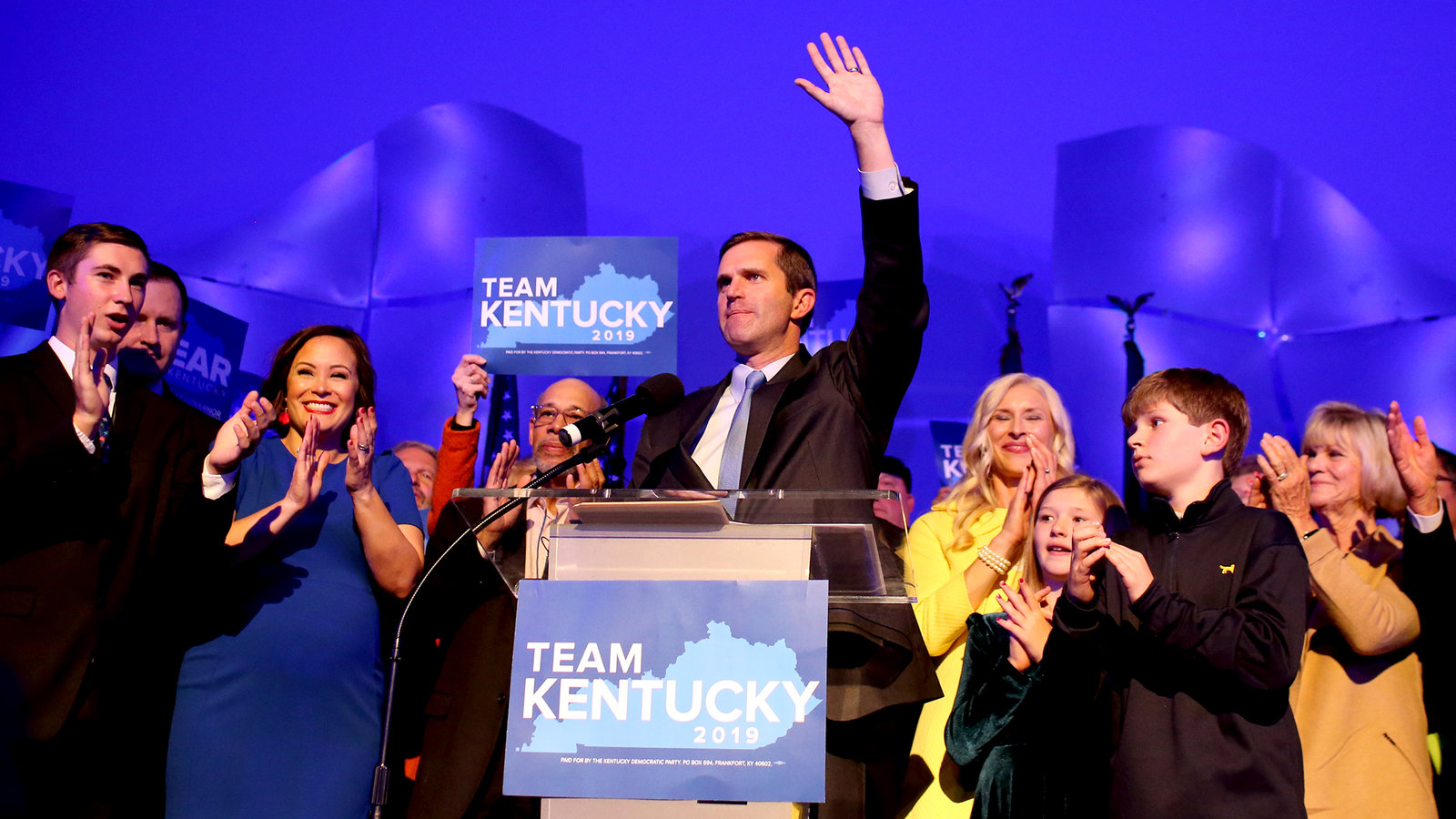Democrats scored big victories in Virginia and Kentucky last night, while Republicans held on in Mississippi. In what’s being viewed as a preview of the 2020 election, suburban moderate voters held the key for Democrats to sway some Republican-held districts which were in GOP hands for decades.
Full Results: Kentucky, Virginia, Mississippi
First to Virginia, where Democrats now control both chambers of the state government, something that hasn’t happened in 26 years. As the AP reports, the landscape of the Commonwealth has changed drastically in recent years, with the northern Virginia suburbs outside Washington, DC, becoming a deep blue bastion for the state and washing Republican control out to dry:
Democrats won majorities in both the state House and Senate in Tuesday’s legislative election. This is the third election in a row that Virginia Democrats have made significant gains since President Donald Trump was elected.
The win will give Democrats control of the legislature and governorship for the first time in 26 years. Democrats have pledged to pass new gun restrictions and raise the minimum wage once in power.
Virginia is the only state with legislative elections this year where partisan control was up for grabs. Much of the contest centered on how voters feel about Trump and his possible impeachment.
Virginia, formerly a rather solid red to purple-red state has become a solidly blue state over the past decade. The state went for George W. Bush in 2000 and 2004, then moved left and voted for Democrats including Barack Obama and Hillary Clinton up to 2016. Being part of the DC suburbs, filled with many Democrats, but also many Republican-leaning moderates, the move could be a harbinger for the GOP in other suburban areas where Trump eked out a nail-biter in 2016.
Next, in Kentucky, where Republican incumbent Gov. Matt Bevin went down in a narrow loss to Democrat Andy Beshear, the race is being viewed as a question of President Trump’s ability to turn out voters:
Kentucky Attorney General Andy Beshear pulled off an upset Tuesday night in an apparent victory over Republican Gov. Matt Bevin, dealing a blow to President Donald Trump, NBC News projects.
In Kentucky, Trump couldn’t save the unpopular Bevin after campaigning with him the night before the election in Lexington, where the president told supporters a loss by the GOP governor would be portrayed as Trump’s having suffered “the greatest defeat in the history of the world.”
Once again, the pivotal data point in the Kentucky race lies in the suburban vote, according to reports:
Bevin struggled in Republican strongholds across the northern part of the state, where the Democrats’ drift and increased enthusiasm was clear.
In 2015, Bevin won Campbell County south of Cincinnati handily. On Tuesday, Beshear not only carried the county with ease, he nearly doubled the number of Democratic votes there, compared to the Democratic nominee of four years ago. Beshear also found another 74,000 Democratic votes in urban Jefferson County, home of Louisville.
The Cincinnati suburban voters, who swung Republican in 2015 and voted for Matt Bevin, went hard in the other direction just four years later to throw him out. The story is similar to the one being written in northern Virginia, but not to quite the same intensity.
Mississippi was the lone bright spot for Republicans where Tate Reeves prevailed to keep the Governorship in GOP hands. This race was not expected to be as competitive as the Kentucky race.
What does this mean for 2020?
For one thing, it means Democrats know where they have opportunities to make inroads against entrenched Republicans in suburban districts:
It’s difficult to draw sweeping conclusions from state elections, each with their own unique quirks and personalities. But there’s little doubt Tuesday’s outcome is a warning to Republicans across the nation a year out from the 2020 election and a year after the 2018 midterms: The suburbs are still moving in the wrong direction.
“Republican support in the suburbs has basically collapsed under Trump,” Republican strategist Alex Conant said. “Somehow, we need to find a way to regain our suburban support over the next year.”
In Kentucky, Bevin held strong support in rural districts and places where President Trump won heavily in 2016. However, that support couldn’t overcome the shift among the suburbs where moderate voters, who softly lean Republican in many cases, seem to be forming a backlash against anything or anyone associated with Donald Trump.
In an off-year election, the turnout model doesn’t resemble what a presidential year will look like, but it does offer insight.
Back to Virginia for a moment. Republicans made big gains during part of President Obama’s term in office, taking back the Governor’s mansion and expanding control in the statehouse from 2009 to 2013. Jump a few years down the line, and the reverse trend is taking shape with Democrats enthused in an off-year election and making historic gains. President Obama went on to easily win reelection in 2012 despite some off-year and midterm backlash in Virginia.
The 2019 elections were a test run for strategies on both sides, but Democrats seem to have come up with a winner this time around and it’s likely they’ll take many of those lessons into next year. Appealing to disaffected suburban voters who dislike President Trump may be key to turning back the President’s hold on states like Ohio, Florida, Wisconsin, Michigan, and Pennsylvania.
The 2019 elections are now history. Onward to 2020.
Donate Now to Support Election Central
- Help defend independent journalism
- Directly support this website and our efforts
